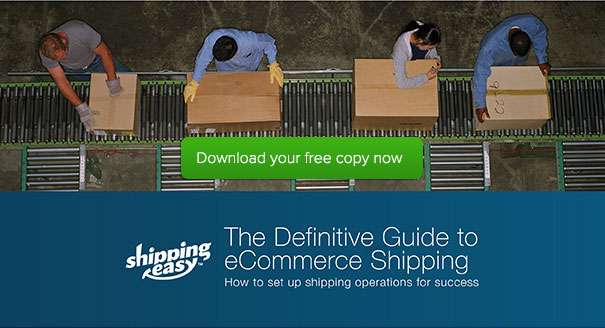
Shipping Carriers Overview
Whether or not you are an eCommerce seller, you are probably familiar with the major carriers—USPS, UPS and FedEx. Below are some of the key criteria to consider when selecting your carrier(s). Carrier service offerings and pricing can vary based on each criterion, so for each criterion that is relevant to the products you sell, it pays to evaluate how each carrier would support your specific requirements.
Carrier Selection Criteria
- Markets: Do you ship domestically, internationally, or both? For a detailed discussion of this topic, please see the ShippingEasy eCommerce Seller’s Guide to International Selling & Shipping
- Tracking: Do you or your customers require tracking and/or delivery confirmation?
- Weight: What are your maximum, minimum, and most common package weights?
- Package Dimensions: What are your maximum, minimum, and most common package dimensions? Can your typical shipments fit into carrier-supplied packaging? Will dimensional weight come into play?
- Insurance: What is your average order value and to what extent will a given carrier’s included insurance cover it? How will you source and fund any additional insurance required? For a detailed discussion of this topic, please see the ShippingEasy eCommerce Seller’s Guide to Shipping Insurance
- Signature: Do you or your customers require signature confirmation?
- Ship to Address Type: Will you be shipping primarily to residential or business addresses? Some carriers apply a surcharge for residential delivery.
- Surcharges: Some carriers apply a surcharge for residential delivery
- Pickup preferences: Where on a given carrier’s route is your business and what is the estimated pickup time?
- Pickup fees: Does your volume meet the minimum or will a pick-up fee be applied to your monthly cost?
- Software: Does the carrier provide shipping software or will they pay a monthly subscription to a multi-carrier shipping solution if you require one?
- Supplies: Does the carrier provide free supplies relevant to the type of shipping you do? This might include boxes, envelopes, and labels.
- Saturday delivery: Do you or your customers require weekend delivery? Some carriers have significant surcharges for Saturday delivery.
- Address Accuracy: Does the carrier charge for a non-deliverable package? Can you update an address after you’ve shipped?
Carrier Selection on Shipping Environments
Selecting the right carrier for a given order can become complex; the variables to consider include the number of carriers you have accounts with, destination address, order service level, cost, package weight, and sometimes package dimensions. A good shipping platform can help ensure you rate-optimize this critical step in the process.
It is important to consider carriers in the context of all three environments you work in:
Carriers on Selling Environment: align your customer facing options with carrier services you intend to use
- Set up shipping rates and options for selected carriers
Carriers on Shipping Environment: group orders based on carrier selection criteria
- Aggregate orders (if you use multiple selling platforms)
- Organize orders based on shipping decision criteria:
- Weight
- Box dimensions
- Age of order
- Value of order
- Number of items
- Address type (residential vs commercial)
- Requested service level
- Source fulfillment location
- Other criteria relevant to your shipping process
- Apply business and shipping rules to help automate selection of the optimal carrier
- Secure access to lower rates due to aggregate volume
Carriers on Physical Environment: organize shipments for each carrier pick up
- Route package to the best carrier
- Plan package pickup appropriately based on carrier policy
No matter which carrier you go with, you’ll eventually build a system and relationship with your carrier of choice, and their practices and process will ultimately affect your own. Choose the carrier that best matches your product mix and provides adequate service while not adding too much to your overall costs.
Related Articles & Resources:
- eCommerce Shipping Capabilities
- Multiple Store Shipping
- International Shipping
- Expedited Delivery Options
- Shipping Pricing Options
- Customer Shipping Preferences
- Picking and Packing Orders
- Fulfillment
- Shipping Returns
- Analytics & Reporting
- Learn more: Shipping with USPS on ShippingEasy
- Learn more: Shipping with FedEx on ShippingEasy
- Learn more: Shipping with UPS on ShippingEasy
This article is from The Definitive Guide to eCommerce Shipping
Request a Demo






